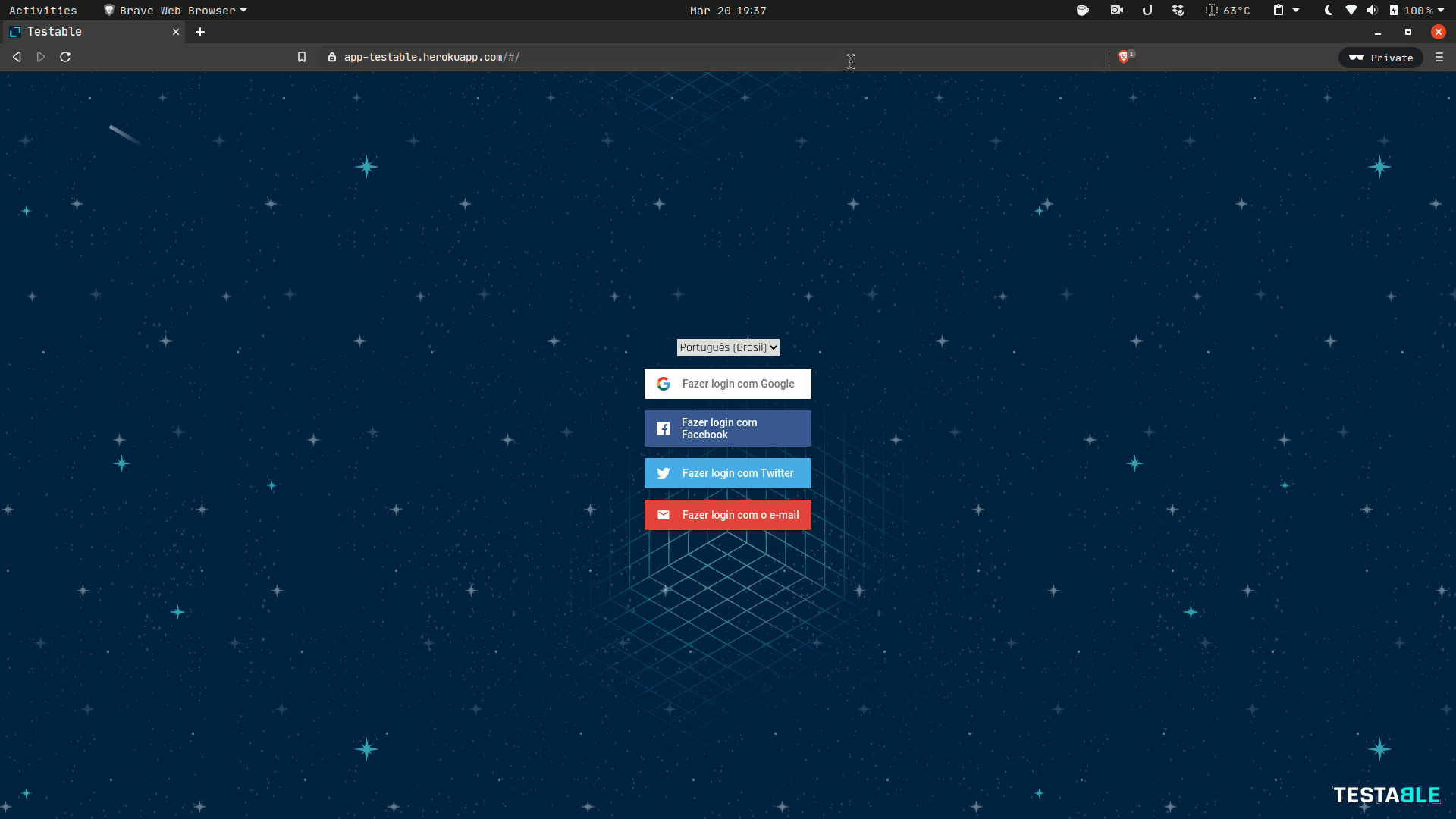Table of contents
Firebase UI localization - Tutorial on how to setup the translated web version
The content here is under the Attribution 4.0 International (CC BY 4.0) license
Firebase ui (user interface) has helped me to build an application with social login with almost no code to write, the ui library provides an implementation of firebase authentication for web ready to use. As such, the expectation of easy to use also points to an localization easy to integrate.
Therefore, the i18n for the firebaseui (Firebase, 2021) has some tricks and is not as straight forward as it could be, it requires manual building for each specific language, and also it is required to ship the generated bundle with the application. In this post, I am going to explore my experience with the firebase library trying to implement the localization in the Testable(Marabesi, 2019) project.
NOTE: This post does not cover using the firebase CDN (Content Delivery Network) (Wikipedia, 2021) for translations.(Firebase, 2021)
Requirements
- This post assumes basic knowledge of firebase on the client side (web project) and also in ReactJs.
- Nodejs 14+ and npm 7+ installed
- Java installed (openjdk 8+)
Setting up Firebase UI
The first step is to get the firebase ui up and running locally, the following commands are available in the README of the project as well.
git clone https://github.com/firebase/firebaseui-web.git &&
cd firebaseui-web &&
npm install
Note: The build process is triggered right after the npm install the modules.
Besides node and npm the build process require more dependencies, for example, the JRE is needed, if you don’t have java available, the following error will show up:
[17:35:31] Finished 'build-ts' after 5.56 ms
[17:35:31] Starting 'build-js'...
[17:35:31] Starting 'build-js-en'...
[17:35:31] Starting 'build-firebaseui-js-en'...
[17:35:31] Starting 'build-externs'...
[17:35:31] Starting 'build-ts'...
[17:35:31] Starting 'build-soy'...
Note: Closure Builder will run with an limited feature set!
[Closure Templates Error] Java (JRE) is needed!
[17:35:31] The following tasks did not complete: default, build-js, build-js-en, <parallel>, build-firebaseui-js-en, <parallel>, build-externs, build-ts, build-soy
[17:35:31] Did you forget to signal async completion?
To fix install the open JDK as follows:
sudo apt-get install -y openjdk-8-jre-headless
The build process for firebaseui also requires google chrome installed
and available in the path as google-chrome. As such, if you don’t have it
install the browser first. Otherwise if you try to run npm run build you will
see the following error:
[17:42:52] I/launcher - Running 1 instances of WebDriver
[17:42:52] I/direct - Using ChromeDriver directly...
[17:42:52] E/launcher - unknown error: cannot find Chrome binary
(Driver info: chromedriver=89.0.4389.23 (61b08ee2c50024bab004e48d2b1b083cdbdac579-refs/branch-heads/4389@{#294}),platform=Linux 4.15.0-112-generic x86_64)
[17:42:52] E/launcher - WebDriverError: unknown error: cannot find Chrome binary
(Driver info: chromedriver=89.0.4389.23 (61b08ee2c50024bab004e48d2b1b083cdbdac579-refs/branch-heads/4389@{#294}),platform=Linux 4.15.0-112-generic x86_64)
Once google chrome has been installed (Prakash, 2020) and available in the path, the build command should run successfully, before build the assets for any specific language, try to build the project as it is, with the following command:
npm run build
The output for that command should be something like:
[100%] soy_files [Done] (0.6 sec)
[17:47:26] Finished 'build-soy' after 599 ms
[17:47:26] Starting '<anonymous>'...
[17:47:42] Finished '<anonymous>' after 16 s
[17:47:42] Finished 'build-firebaseui-js-en' after 17 s
[17:47:42] Starting '<anonymous>'...
[17:47:45] Finished '<anonymous>' after 3.01 s
[17:47:45] Finished 'build-esm-en' after 20 s
[17:47:45] Starting '<anonymous>'...
[17:47:45] Finished '<anonymous>' after 2.45 ms
[17:47:45] Finished 'build-esm' after 20 s
[17:47:45] Starting 'build-css'...
[17:47:45] Finished 'build-css' after 245 ms
[17:47:45] Starting 'build-css-rtl'...
[17:47:46] Finished 'build-css-rtl' after 201 ms
[17:47:46] Starting 'clean'...
[17:47:46] Finished 'clean' after 5.51 ms
The firebase ui, builds all assets for each specific language and
stores it under specific files, the output of the process is store under the
dist/ directory, listing the files , should give the following output:
dist/
├── esm__en.js
├── esm.js
├── externs
│ └── firebaseui-externs.js
├── firebaseui.css
├── firebaseui__en.js
├── firebaseui.js
├── firebaseui-rtl.css
├── index.d.ts
├── npm__en.js <---- English
└── npm.js
1 directory, 10 files
By default, the only language that is built is english, for the purpose
of this post, the file that is important to note here is npm__en.js, it
has the firebase bundle in English, the build process for other languages
is to run npm run build and specifying the desired language.
To build firebaseui with Spanish support, the following build command should be run:
npm run build build-npm-es
The build process for Spanish, will output a new file under the dist/
called npm__es.js, it means that we have support for English and Spanish.
dist/
├── esm__en.js
├── esm.js
├── externs
│ └── firebaseui-externs.js
├── firebaseui.css
├── firebaseui__en.js
├── firebaseui.js
├── firebaseui-rtl.css
├── index.d.ts
├── npm__en.js <----- English
├── npm__es.js <----- Spanish
└── npm.js
Import localized firebaseui
Having the files translated is half way done, the other piece is to import the translated files in the frontend project. Before using, the localized approach, let’s dive into the standard way of using firebaseui in a reactjs application.
The usage is as any other library, just importing it and then later on in the code invoking its functions:
import * as firebaseui from 'firebaseui'
// at some point in the code
const ui = new firebaseui.auth.AuthUI(firebase.auth())
The import approach takes english as the standard language, and for a localized approach with firebaseui, the import should be based on the language, for example:
const firebaseResolver = language => require('../../third-party/wrappers/firebaseui/npm__' + language);
// at some point in the code
const firebaseui = firebaseResolver('es') // imports firebase in Spanish
const ui = new firebaseui.auth.AuthUI(firebase.auth())
The localized firebaseui approach has some drawbacks, and the first one is
that it will increse the application bundle size as for each language,
the npm__* file created has around 200kbs.
The second is that it requires a page reload, so then it reflects the selected language as it should:
References
- Firebase. (2021). firebaseui-web. https://github.com/firebase/firebaseui-web
- Marabesi, M. (2019). Testable - gamified tool to improve unit testing teaching. https://github.com/marabesi/testable
- Wikipedia. (2021). Content delivery network. https://en.wikipedia.org/wiki/Content_delivery_network
- Firebase. (2021). firebaseui-web. https://github.com/firebase/firebaseui-web
- Prakash, A. (2020). Install Google Chrome on Ubuntu [Beginner’s Tutorial]. https://itsfoss.com/install-chrome-ubuntu/#install-chrome-terminal
